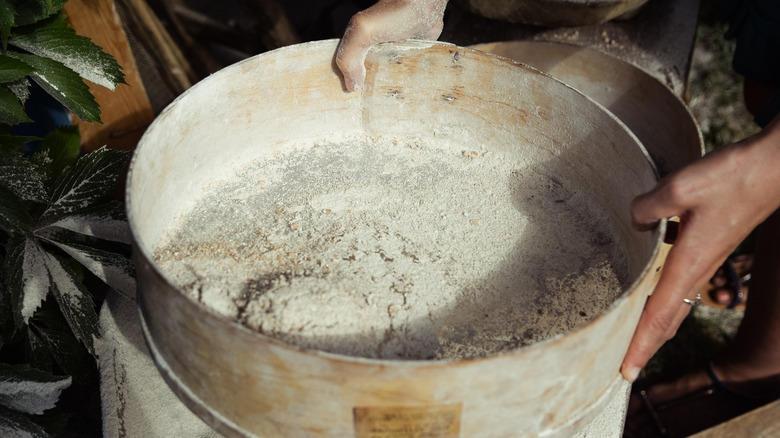Baking ingredients often find their way from the kitchen to the garden. Sea salt, for example, helps plants take up water and nutrients. Sugar boosts soil microorganism populations. Fermented dairy — think buttermilk and yogurt — is a fertilizer. But one common ingredient found in kitchen cupboards across the country makes a valuable addition to your compost pile. Plain old flour.
Wheat flour is made by milling wheat berries (another name for wheat seeds) into a fine powder. For white flour, the bran and outer shell are removed before milling, but those parts are retained when making whole wheat flour. The berries contain macronutrients, like nitrogen, proteins, and carbohydrates, and micronutrients (calcium, magnesium, amino acids, iron, and trace minerals), which are transferred into the flour during the milling process. They get released into your compost as the flour breaks down. While wheat flour may give your compost pile an extra boost of nutrients, you can use any type of flour when composting.
Flour makes for healthy compost

Flour is a good source of nitrogen, the University of Florida IFAS Extension notes in its 2024 “Composting for Consumers” guide. Nitrogen, or “greens,” is one of the two core components of a healthy compost, along with “browns” (sources of carbon). In an ideal compost pile, layers of dead, dry leaves, straw, shredded paper, sawdust, or woodchips (the brown) are interspersed with food scraps and fresh lawn clippings (the green). The former provides energy and structure to your pile and keeps it from getting too soggy. However, compost needs some moisture for the microbes that break down the organic materials to thrive, and that’s what the “green” provides.
The other aforementioned micronutrients found in flour have proven plant-growth-boosting benefits, too. For example, plants can’t create healthy cell walls and membranes without a good source of calcium. Plants use iron and magnesium in chlorophyll production; without these trace nutrients, plants look stunted or lose leaf color. Adding flour to your compost pile will ensure your plants can benefit from these essential minerals.
Best practices for flour composting
You can add flour to all types of composts, from long-game cold or hot compost systems to an airtight, fast-processing bokashi bin. When damp, flour forms a thick paste — think bread dough or flour glue. If you dump an entire bag of flour onto your compost pile in one go, you’ll effectively glue the pile together, restricting oxygen. Instead, sprinkle the flour over the pile, mixing it as you go. You can also add the powder to something chunkier, like freshly raked fall leaves or woodchips, first. This also helps reduce visits from flour-hungry pests. Is the bag infested with weevils? Freeze the flour to kill the pesky critters before adding it to your compost. This is, incidentally, also an excellent way to get rid of flour mites.
You can even feed flour to your worm farm — it’s a valuable source of protein and other vital minerals. Sift the flour into your farm and lightly spritz the layer with water. This stops the flour from clumping. Alternatively, mix it with other, more substantially sized food scraps before feeding it to your worms. Flour has other uses in the garden, too. It makes a great fertilizer. Additionally, a line of flour on the ground is an impermanent plotting tool — use it to mark out new yard features. You can even safely sprinkle flour in your garden to banish aphids.